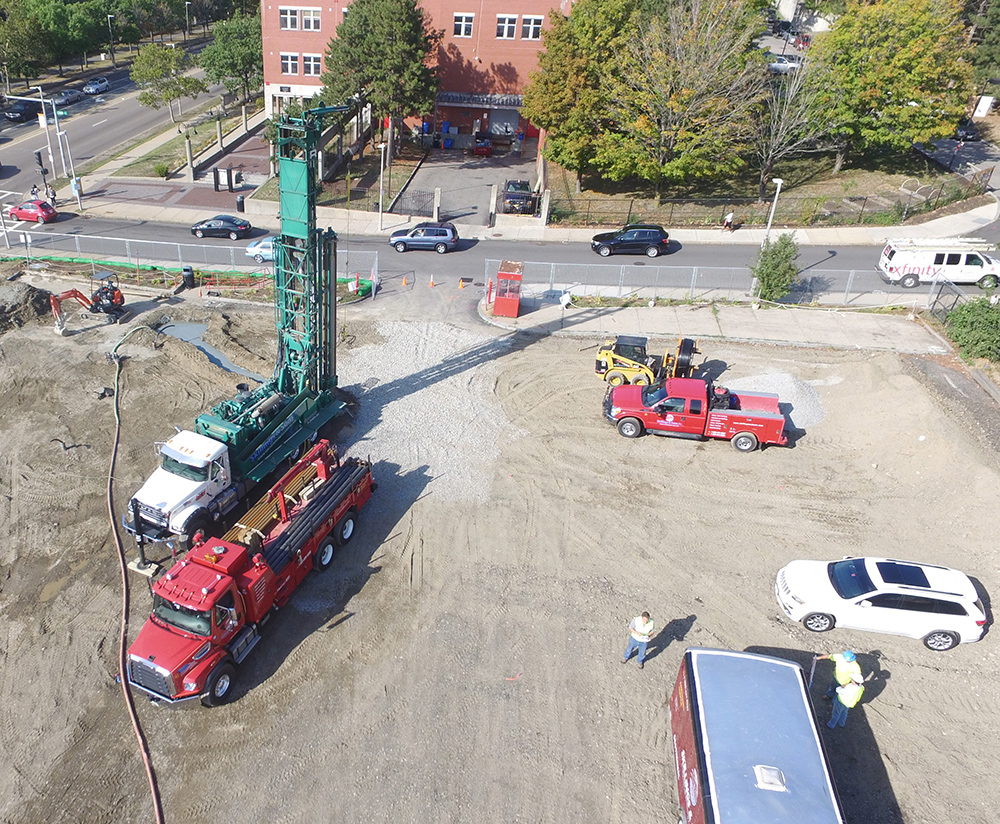

All New England states are making efforts to achieve reduced or Net Zero greenhouse gas (GHG) emissions and develop clean energy and climate plans for the future. For example, Massachusetts has developed a Clean Energy and Climate Plan for 2050 that includes a comprehensive and aggressive plan to achieve Net Zero GHG emissions by that year.
In addition, like the 2023 updated Stretch Code and Municipal Opt-in Specialized Energy Code being adopted in Massachusetts, New England energy code modifications will likely require more changes to conventional methods for space conditioning. The Massachusetts code contains new regulations that aim to meet the 2050 goal through increased energy efficiency, reduced heating loads, and efficient electrification. As New England moves away from fossil fuels for heating and cooling, geothermal systems have proven to be a far more efficient and beneficial method to address our heating and cooling needs while supporting these climate plans and goals.
That begs the question though - what are geothermal systems and how do they work? Also referred to as earth-coupled heating, geoexchange, geothermal heat pumps, or ground-source heat pumps, they take advantage of the temperature gradient between the fluctuating aboveground temperature and the relatively constant temperature below ground, using the energy in the Earth itself to move heat, not create it. Geothermal systems include three principal components:
• A geothermal earth connection;
• A geothermal heat pump subsystem; and
• A geothermal heat distribution system.
Acting much like your refrigerator, which is also a heat pump, geothermal systems remove heat from the Earth, concentrate it, and transfer it to the building. This process is simply reversed to provide cooling. According to the US EPA, a heat pump can deliver as much as five times the energy from the ground than is used to run it, resulting in a net energy benefit.

are helping New England states meet their energy efficiency and GHG emission goals.
The most common geothermal system uses vertical wells. Another option is the use of horizontal trenches, but due to the prohibitive amount of land area required, we’ll focus on vertical systems here. Vertical systems can either be closed- or open-loop, the difference being that closed loop systems do not use groundwater while open loop systems do.
Closed loop systems consist of a loop grouted in the well and a fluid, either water or a mixture of water and an environmentally friendly antifreeze, is circulated through the loop. This fluid absorbs heat from, and releases heat to, the surrounding underground formation. A heat exchanger in the building transfers heat between the refrigerant in the heat pump and the solution in the loop.
Open loop systems use the groundwater as the heat transfer medium and consist of two pipes in the well. One pipe holds a pump that pulls water from the upper zone of the water column while the second (return line) pipe discharges the conditioned water back deeper into the ground. Natural groundwater attenuation and the flow of water from the top of the water column to the bottom allows the water to return to its ambient state.
Costs and Efficiency
Note though that the cost of installing a geothermal system is higher than installing a traditional furnace and air conditioning system. However, the greatly increased energy efficiency results in savings on heating and cooling bills that allow the system to pay for itself within five to 10 years. Geothermal heat pumps are:
• 40% more efficient than air source heat pumps;
• 48% more efficient than gas furnaces; and
• 75% more energy efficient than oil furnaces.
When a geothermal system is installed during new construction, no chimney or flue is required to vent by-products from burning fossil fuels. There is also no need for an outside mechanical area and the size of the required inside mechanical area can be reduced by up to 50%. Also, air purification and humidity control measures are incorporated into the system itself. Additionally, radiant heat, air conditioning, and snowmelt systems can be added to the system far more cost effectively than with a fossil fuel system.
Notes about Geothermal Systems:
• Geothermal systems do not lose efficiency when the temperature of the outdoor air drops below freezing, like with air-source heat pumps.
• Geothermal heating systems are different from geothermal generating facilities, which tap underground steam reservoirs to produce electricity.
• Geothermal wells do not need to make water. The design of the well is determined by the size of the building.
• Geothermal systems do not need to “bleed” any water.
Geothermal systems are becoming far more common with more and more states adopting increased energy efficiency and Net Zero goals for their new and retrofit building codes. More than one million geothermal heating systems have been installed in the U.S., and it’s estimated that these systems have saved eight billion kwh of electricity and reduced the amount of CO2 released to the atmosphere by almost six million metric tons. This monumental impact is equivalent to taking 1.3 million cars off the road or planting more than 385 million trees!
Carrie Quagliaroli is an assistant general manager and Johanna Hall, EIT, CEM is team leader at Weston & Sampson in Reading, Mass. and Raymond, NH.
 (1).png)







